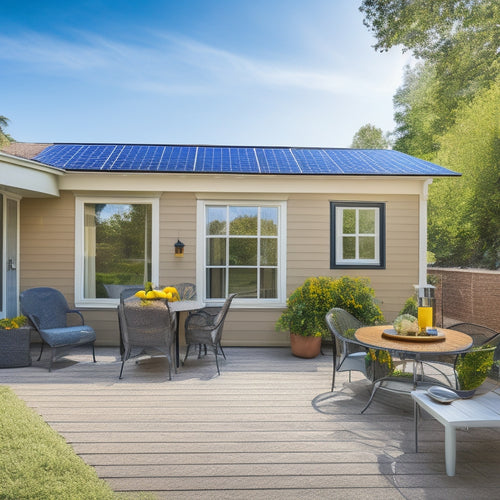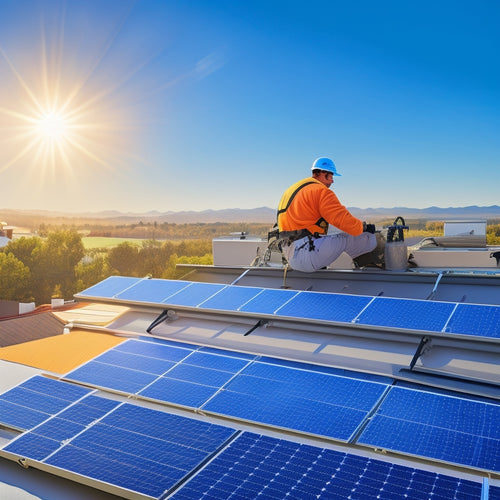
Charging Points in Rural Areas: 5 Key Insights
Share
When driving through rural areas, you'll face a shortage of charging points, making EV ownership stressful and inconvenient. You'll encounter urban-rural disparities in EV infrastructure investments, and rural revitalization efforts often overlook charging infrastructure. Limited public charging points, varying payment methods, and patchy coverage make long-distance trips challenging. Home charging limitations, such as electrical capacity issues and power outages, add to the obstacles. You'll need to navigate these hurdles to make EV adoption a reality in rural areas - but there's more to uncover about the complexities and potential solutions that await you.
Key Takeaways
• Rural areas lack sufficient charging points, causing anxiety for EV owners who fear running out of charge during trips.
• Scarcity of public charging points in rural areas exacerbates range anxiety and complicates long-distance travel.
• Limited access to charging infrastructure in rural areas is a significant barrier to EV adoption, requiring meticulous route planning.
• Home charging limitations, such as electrical capacity constraints and power outages, pose additional challenges for rural EV owners.
• Education, outreach, and local incentives are essential to overcome the unique barriers to EV adoption in rural areas.
Rural Charging Infrastructure Gaps
As you drive through rural areas, you're likely to encounter a stark reality: vast stretches of land with little to no access to charging points, leaving electric vehicle owners anxious about running out of juice. This lack of infrastructure is a significant hurdle to widespread EV adoption, particularly in rural areas where residents often have to travel longer distances to access basic amenities.
The scarcity of charging points in rural areas is a classic example of infrastructure inequality, where urban centers get preferential treatment when it comes to investments in EV infrastructure.
Rural revitalization efforts often focus on bringing essential services to these underserved areas, but EV charging infrastructure is often an afterthought. This oversight can have far-reaching consequences, including limiting the adoption of EVs in rural areas and perpetuating a cycle of dependence on fossil fuels.
Public Charging Point Availability
Your route planner may suggest a scenic drive through rural areas, but it won't alert you to the scarcity of public charging points along the way, leaving you to wonder if you'll find a place to refuel your EV.
As you venture into the countryside, you'll quickly realize that public charging points are few and far between. This lack of infrastructure is a major concern, especially when you consider the limited range of many EVs.
When you do stumble upon a public charging point, you'll likely encounter varying payment methods, from credit card payments to mobile apps. This inconsistency can be frustrating, especially if you're not prepared.
Urban planning in rural areas often prioritizes other infrastructure needs, leaving EV owners to fend for themselves. The result is a patchwork of charging points, with some areas better served than others.
As you navigate these rural roads, you'll need to be prepared for the unexpected, always keeping a watchful eye on your battery level and planning your route accordingly.
Long-Distance Travel Challenges
You'll face a unique set of challenges when taking your EV on a long-distance trip, where the scarcity of charging points in rural areas can quickly turn a pleasant drive into a stressful ordeal. You'll need to be meticulous with your route planning, ensuring you pass through areas with accessible charging points.
A road trip that was meant to be enjoyable can quickly become an anxiety-ridden experience if you're unsure when you'll be able to charge your vehicle next. It's essential to plan your charging stops in advance, taking into account the limited charging infrastructure in rural areas.
You'll need to research and identify charging points along your route, making sure they're compatible with your vehicle and can provide a sufficient charge to get you to your next stop. With careful planning, you can minimize the stress associated with long-distance EV travel.
However, the lack of charging points in rural areas can still make for a frustrating experience, highlighting the need for improved infrastructure to support the growing number of EV owners.
Home Charging Limitations Exposed
Thinking about, it's crucial to
Charging your EV at home may not be as convenient as you think, especially when your vehicle's battery capacity exceeds your home's electrical capacity. You might assume that plugging in your EV at home is a hassle-free experience, but that's not always the case. If you live in a rural area, you're likely to face limitations that can disrupt your daily routine.
One major concern is power outages. Imagine coming home to a dark house and a dead EV battery. It's a frustrating scenario, especially if you rely on your vehicle for daily commutes. Nighttime charging, which is usually the most convenient time, can also be a challenge. If your home's electrical system can't handle the power demand, you might need to charge your EV during off-peak hours, disrupting your sleep schedule.
These limitations can be a major setback for rural residents who already face challenges with EV adoption.
Thinking about these factors when planning your EV ownership experience, especially if you live in an area prone to power outages or have limited electrical capacity at home.
Rural EV Adoption Barriers
Rural areas often lack the infrastructure to support widespread EV adoption, and this limited infrastructure creates significant barriers to EV ownership. You might be surprised by the challenges rural communities face in adopting electric vehicles.
Here are some of the key barriers you might encounter:
-
Limited access to charging infrastructure: Rural areas typically have fewer charging points, making it difficult for you to charge your EV on the go.
-
Higher upfront costs: Purchasing an EV can be expensive, and rural areas often have lower average incomes, making it harder for you to afford an EV.
-
Limited education and outreach: You mightn't have access to education and outreach programs that promote EV adoption, making it harder to learn about the benefits of EVs.
- Fewer local incentives: Rural areas often have fewer local incentives to encourage EV adoption, such as tax credits or rebates.
These barriers can make it difficult for you to adopt an EV in rural areas. However, with education outreach and local incentives, you can overcome these challenges and enjoy the benefits of EV ownership.
Frequently Asked Questions
Can Local Governments Incentivize Rural Charging Infrastructure Development?
You can encourage rural charging infrastructure development by offering local governments incentives, like tax breaks, subsidies, or zoning variances, to attract private investment and stimulate growth in underserved areas.
How Do Rural Charger Installations Impact Local Electrical Grids?
As you plug in your electric vehicle, you're about to initiate a chain reaction in the local electrical grid. Will it be a smooth hum or a Grid Overload? You're adding stress to the Power Distribution system, so let's explore the impact.
Are Rural Charging Points Compatible With All Electric Vehicle Models?
You'll be relieved to know that most rural charging points adhere to Vehicle Standards, ensuring Charger Universality, so you can charge your EV with ease, regardless of the model, as long as it meets the universal charging requirements.
Can Rural Residents Without Driveways Charge Their Electric Vehicles?
You're wondering if you can charge your EV without a driveway? Yes, you can! Street charging points and public plazas are being installed, allowing you to plug in and recharge your vehicle conveniently.
Do Rural Charging Points Accept Multiple Payment Methods?
You'll be relieved to know that most rural charging points accept multiple payment methods, offering you flexibility and convenience, ensuring rural accessibility isn't hindered by limited payment options.
Related Posts
-

Waterproofing Solar Panels for Vehicles: A Step-by-Step Guide
When waterproofing solar panels for your vehicle, start by evaluating your energy requirements and selecting the righ...
-

10 Tips to Buy Affordable Solar Panels Online
When purchasing affordable solar panels online, you'll want to research reputable retailers, compare prices, and chec...
-

3 Essential Steps for Solar Electricity Installation
To guarantee a successful solar electricity installation, you'll need to follow three essential steps. First, assess ...


